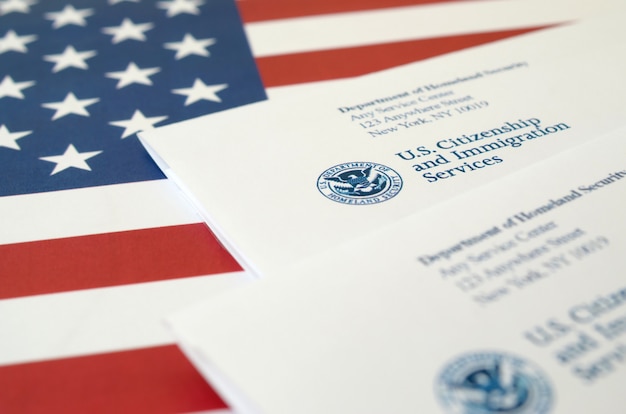SECURE Act 2.0: How It Changes 529 Plans in 2025

Understanding the Impact of the New SECURE Act 2.0 on 529 Plans in 2025 involves grasping how provisions like the Roth IRA rollover and increased contribution limits can significantly affect college savings and financial planning strategies for families in the United States.
Are you planning for your child’s education and wondering how the latest legislation will impact your savings strategy? Understanding the Impact of the New SECURE Act 2.0 on 529 Plans in 2025 is crucial for maximizing the benefits and avoiding potential pitfalls.
What is the SECURE Act 2.0 and Why Does It Matter for 529 Plans?
The SECURE Act 2.0, building upon the original SECURE Act of 2019, introduces a series of changes to retirement and education savings plans. For families utilizing or considering 529 plans, it’s essential to understand these updates to make informed decisions.
Key Provisions of SECURE Act 2.0
The SECURE Act 2.0 includes several provisions that directly or indirectly affect 529 plans. These range from allowing rollovers to Roth IRAs to adjustments in contribution rules. Let’s delve into some of the most relevant components.
SECURE Act 2.0 and Financial Planning
Financial planning is an ongoing process. With the SECURE Act 2.0, families must reassess their saving strategies. This means understanding how these changes can impact long-term college savings and investment growth.
- Roth IRA Rollover: Starting in 2024, beneficiaries can roll over unused 529 plan assets into a Roth IRA, subject to certain conditions.
- Increased Contribution Limits: While the SECURE Act 2.0 doesn’t directly change 529 contribution limits, other provisions can indirectly impact contribution strategies.
- Impact on Gifting Strategies: Understanding how the Act affects estate planning and gifting strategies is crucial for high-net-worth families.
In summary, the SECURE Act 2.0 brings significant changes that could either benefit or complicate your 529 plan strategy. It’s important to stay informed and adaptive.

How Does the Roth IRA Rollover Affect 529 Plans?
One of the most talked-about provisions of the SECURE Act 2.0 is the ability to roll over unused 529 plan assets into a Roth IRA. This offers additional flexibility but comes with specific requirements.
Conditions for Roth IRA Rollover
The Roth IRA rollover isn’t a free-for-all. Several conditions must be met before you can execute this move. It’s essential to check if you’re eligible before making any decisions.
Benefits of Roth IRA Rollover
The Roth IRA rollover offers tax advantages and can be a strategic move for families with leftover 529 funds. However, the benefits vary based on individual financial situations.
- Tax-Free Growth: Roth IRAs offer tax-free growth and withdrawals, providing long-term financial security.
- Flexibility: Roth IRAs aren’t restricted to education expenses, offering flexibility in how the funds are used.
- Estate Planning: Roth IRAs can be an effective tool for estate planning, helping families pass on wealth efficiently.
In essence, the Roth IRA rollover provision adds a layer of complexity to 529 plans but can be highly beneficial if utilized correctly. Careful planning and consideration are key.
Contribution Strategies in Light of the SECURE Act 2.0
While the SECURE Act 2.0 doesn’t directly change contribution limits, it does impact overall contribution strategies. Families need to re-evaluate how much and when to contribute to their 529 plans.
Front-Loading vs. Gradual Contributions
Deciding whether to front-load a 529 plan or make gradual contributions depends on your financial situation and risk tolerance. The SECURE Act 2.0 may influence this decision.
Impact on State Tax Benefits
Many states offer tax benefits for 529 plan contributions. Understanding how the SECURE Act 2.0 interacts with these state-level incentives is critical for tax optimization.
- Contribution Timing: Strategically timing your contributions can maximize state tax benefits.
- Income Limitations: Be aware of any income limitations that may affect your eligibility for state tax deductions.
- Multiple Accounts: Consider opening multiple 529 accounts to take advantage of different state benefits, if applicable.
Overall, understanding the interplay between federal regulations and state tax benefits is essential for optimizing your 529 plan contribution strategy.

Investment Options and the SECURE Act 2.0
The SECURE Act 2.0 doesn’t directly alter your investment options within a 529 plan. However, it underscores the importance of regularly reviewing and adjusting your investment strategy.
Age-Based Portfolios
Age-based portfolios automatically adjust the asset allocation as the beneficiary gets closer to college age. This remains a popular and convenient investment option.
Static Portfolios
Static portfolios offer a fixed asset allocation that doesn’t change over time. These may be suitable for investors with a specific risk tolerance and investment timeline.
Evaluating Performance
Regularly evaluating the performance of your 529 plan investments is crucial. The SECURE Act 2.0 highlights the need for proactive management to ensure your savings are on track.
In conclusion, while the SECURE Act 2.0 doesn’t change your investment choices, it reinforces the importance of a well-thought-out and regularly reviewed investment strategy within your 529 plan.
Potential Pitfalls and How to Avoid Them
Navigating the SECURE Act 2.0 and its impact on 529 plans isn’t without its challenges. It’s crucial to be aware of potential pitfalls and how to sidestep them.
Understanding the Fine Print
The devil is in the details. Make sure you thoroughly understand all the fine print associated with the SECURE Act 2.0, especially concerning the Roth IRA rollover.
Consulting a Financial Advisor
Given the complexity of the SECURE Act 2.0, consulting a financial advisor can be invaluable. They can provide personalized guidance based on your specific financial situation.
- Professional Advice: Seek advice from qualified professionals who understand the nuances of the SECURE Act 2.0.
- Personalized Strategy: Develop a financial strategy tailored to your specific needs and goals.
- Ongoing Review: Regularly review your 529 plan and financial strategy with your advisor.
By being vigilant and seeking expert advice, you can avoid common pitfalls and make the most of the opportunities presented by the SECURE Act 2.0.
Future-Proofing Your 529 Plan in 2025 and Beyond
The SECURE Act 2.0 is just one piece of the puzzle. Future-proofing your 529 plan involves staying informed about potential legislative changes and adapting accordingly.
Staying Informed
Keep up-to-date with the latest developments in financial legislation and regulations. Knowledge is your best defense against unexpected changes.
Regularly Reviewing and Adjusting
Financial planning is not a set-it-and-forget-it endeavor. Regularly review and adjust your 529 plan and overall financial strategy to adapt to changing circumstances.
- Annual Review: Conduct an annual review of your 529 plan and financial goals.
- Adjust Asset Allocation: Adjust your asset allocation based on your risk tolerance and investment timeline.
- Seek Continuous Improvement: Always look for ways to improve your financial planning strategy.
In conclusion, future-proofing your 529 plan involves a proactive approach to financial planning, staying informed, and adapting to the ever-changing landscape of financial regulations.
| Key Point | Brief Description |
|---|---|
| 🔄 Roth IRA Rollover | Allows rolling unused 529 funds to Roth IRA under specific conditions. |
| 📈 Contribution Strategies | Evaluate front-loading vs. gradual contributions based on financial situation. |
| 💰 State Tax Benefits | Understand how SECURE Act 2.0 interacts with state tax incentives. |
| ⚠️ Potential Pitfalls | Be aware of the fine print and consult a financial advisor to avoid challenges. |
Frequently Asked Questions (FAQ)
▼
The SECURE Act 2.0 aims to enhance retirement savings and financial security for Americans by making changes to various retirement and education savings plans, including 529 plans.
▼
Beneficiaries can roll over unused 529 plan assets into a Roth IRA, subject to certain conditions such as contribution limits and a waiting period. This offers more flexibility in using leftover funds.
▼
While the Act doesn’t directly alter contribution limits, other provisions can indirectly impact contribution strategies, especially concerning tax benefits and investment options within the plan.
▼
Potential pitfalls include misunderstanding the fine print, not adapting contribution strategies, and failing to optimize state tax benefits. Consulting a financial advisor can help mitigate these risks.
▼
Future-proofing involves staying informed about legislative changes, regularly reviewing and adjusting your financial strategy, and seeking professional advice to adapt to the evolving financial landscape.
Conclusion
Understanding the Impact of the New SECURE Act 2.0 on 529 Plans in 2025 is crucial for families planning for education expenses. By grasping key provisions such as the Roth IRA rollover and adapting contribution strategies, you can maximize benefits and avoid pitfalls, ensuring a secure financial future for your children’s education.





